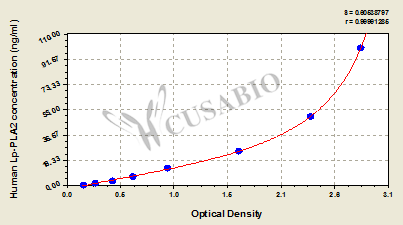The human Lp-PLA2 ELISA Kit is engineered for accurate measurement of human Lp-PLA2 levels from samples including serum, plasma, cell culture supernates, or tissue homogenates. It uses the Sandwich-ELISA mechanism in combination with the enzyme-substrate chromogenic reaction to measure the Lp-PLA2 content in the sample. The color intensity is positively correlated with Lp-PLA2 content in the sample. This kit has been validated against standards of sensitivity, specificity, precision, linearity, recovery, and lot-to-lot consistency.
Lp-PLA2, also called PLA2G7, is secreted in many inflammatory cells such as macrophages exerting both anti-inflammatory and pro-inflammatory roles. Lp-PLA2 is primarily associated with low-density lipoprotein (LDL), and with high-density lipoprotein (HDL) in a small amounts. Lp-PLA2 catalyzes hydrolysis of the acetyl group at sn-2 position of PAF to generate lyso-PAF and acetate. It also cleaves oxidatively modified positions of apoB100-containing lipoproteins into oxidized nonesterified fatty acids (oxFFAs) and lysophosphatidylcholine. It can act as an imflammatory biomarker for evaluating risk factors linked to cardiovascular diseases (CVD). Higher plasma concentrations of Lp-PLA2 activity has been demonstrate tofurther enhance the risk of cardiovascular events, such as myocardial infraction and ischemic stroke.






